Paint bucket making machines have revolutionized the process of manufacturing paint buckets, significantly improving efficiency and reducing production costs. These machines employ high-precision injection molding techniques to produce high-quality paint buckets in a variety of sizes and materials. As the demand for paint containers continues to grow, so does the need for reliable and efficient paint bucket making machines.
Our painting machines offer a plastic paint bucket making machine that features a strengthened clamping system and a high-quality, specialized plasticizing screw for efficient color mixing, and also provide similar solutions, focusing on durability and stability of the final product while minimizing production costs.
These machines are designed to handle a wide range of thermoplastic materials PP and PE for bucket handles and lids. The utilization of servo injection molding machines, along with automation solutions like in-mold labeling, ensure that paint bucket making machines are capable of meeting the demands of modern manufacturing processes while maintaining high standards of quality and efficiency.
Paint Buckets
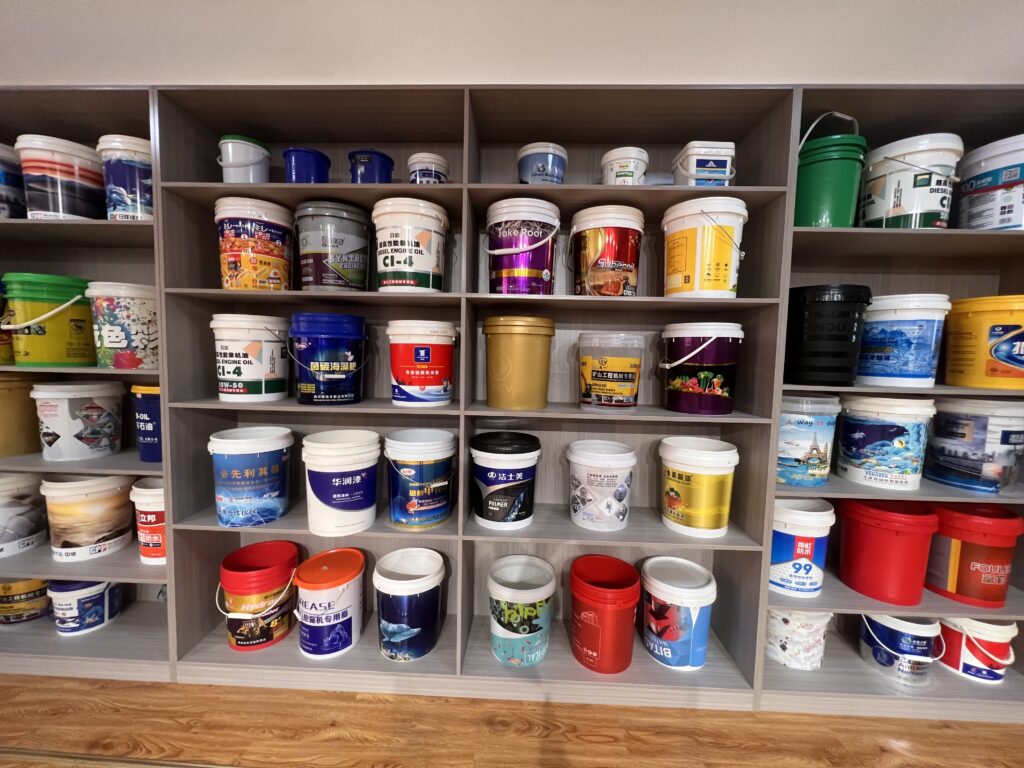
Paint buckets are essential tools in the painting industry, and they come in various types, materials, and sizes. This section explores the different aspects of paint buckets, including types, body, lid and closure, handles, size and capacity, and materials used in manufacturing.
Paint Bucket Body
The paint bucket body is the main container that holds the paint. It is designed for easy paint mixing and stirring. The shape and design of the bucket body affects the ease of cleaning and the amount of paint residue left after use.
Paint Bucket Lid & Closures
Lids and closures are vital for keeping paint fresh and preventing evaporation or contamination. They can be resealable or one-time use, with some offering additional features such as airtight seals, pouring spouts, or built-in brush holders.
Paint Bucket Handles
Handles on paint buckets make them portable and easy to carry. These handles can be made of metal, plastic, or have a combination of materials for added comfort and durability. They are designed for secure grip and easy transport, with some offering ergonomic designs or pivoting features for added convenience.
Paint Bucket Size and Capacity
Paint buckets come in various sizes and capacities to accommodate different painting projects. Common sizes include:
| Size | Capacity |
|---|---|
| Small | 1-2 liters |
| Medium | 5-10 liters |
| Large | 15-20 liters |
Bucket Raw Material
The material used in the production of paint buckets greatly affects their durability, weight and ease of cleaning. Common materials include:
- Plastic PP
- HDPE
Paint Bucket Injection Molding Machine
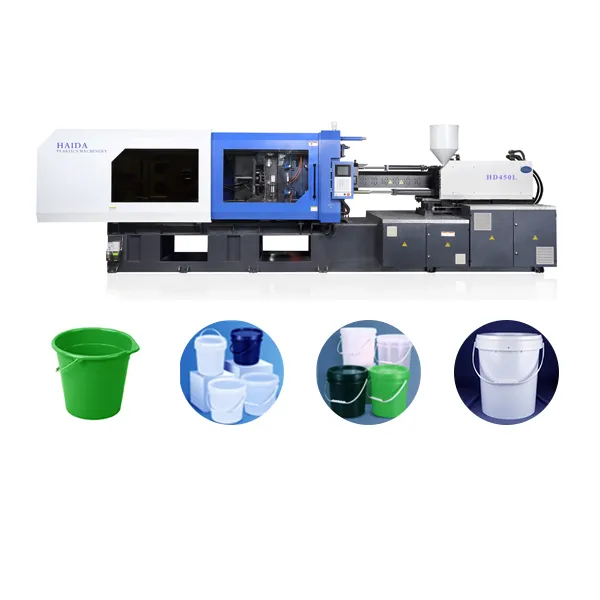
The paint bucket body injection molding machine is an essential part of the paint bucket manufacturing process. These machines are designed to handle the specific requirements of producing plastic paint buckets, which can range from 5L to 20L in size. The machine’s robust build and advanced technology enable efficient production of paint buckets.
One crucial aspect of these machines is their high injection speed, typically around 500-600 mm/s, which ensures that the process is smooth and time-efficient. Additionally, the machine’s open stroke should be larger than 750mm, enabling easy processing of large paint buckets. A precise mold open control system is also necessary, especially if the machine is intended to support in-mold-labeling in the future.
Some of the prominent features of a paint bucket body injection molding machine include:
- High-speed performance to facilitate rapid production
- The ability to accommodate various bucket sizes and shapes
- An advanced control system to ensure precision and efficiency
- Compatibility with in-mold-labeling technology if required
It is essential to select a machine that meets the specific requirements of the paint bucket production process. In addition, partnering with a reliable supplier will help in providing necessary technical support and ensuring a smooth, efficient operation.
Paint Bucket Lid & Closure Making Machine
Paint bucket lid and closure making machines are specialized equipment used to manufacture plastic lids and closures for paint containers. These machines usually work with injection molding and thermoforming technologies to produce high-quality, durable and well-fitting lids.
One of the key aspects of a paint bucket lid making machine is its ability to create a tight seal, ensuring that the paint inside the container remains fresh and uncontaminated. Furthermore, these machines are designed to produce lids that are easy to open and close for the end-users, providing convenience and efficiency.
Some of the typical features and benefits of paint bucket lid making machines include:
- High-speed production: These machines are capable of producing large quantities of lids and closures in a relatively short amount of time, meeting the demands of the paint industry.
- Energy efficiency: Modern paint bucket lid making machines are designed to consume less energy while maintaining optimal production levels, helping manufacturers save on operational costs.
- Versatility: Many of these machines are capable of producing not only paint bucket lids but also closures for other containers, such as food, cosmetics, and chemicals.
- Customization options: Manufacturers can customize the shape, size, and design of paint bucket lids and closures according to specific client requirements.
In conclusion, paint bucket lid and closure making machines play a critical role in the paint industry, ensuring the safe storage and transportation of paint products. By investing in advanced equipment, manufacturers can improve the efficiency of their production line and cater to the growing demands of the market.
Paint Bucket Handle Making Machine
Paint bucket handle making machines are specialized equipment designed for the efficient production of handles for paint buckets. These machines often utilize injection molding machines to ensure high-quality and consistent output.
These machines often provide a high degree of flexibility and customization, allowing manufacturers to tailor-make handles according to specific customer drawings. This ensures that the paint bucket handles produced meet the exact requirements of each client.
Paint Bucket Molds
Paint bucket molds play a crucial role in the production of paint buckets, ensuring consistent and high-quality results. This section will explore various aspects of paint bucket molds, focusing on their design and manufacturing.
Paint Bucket Body Mold
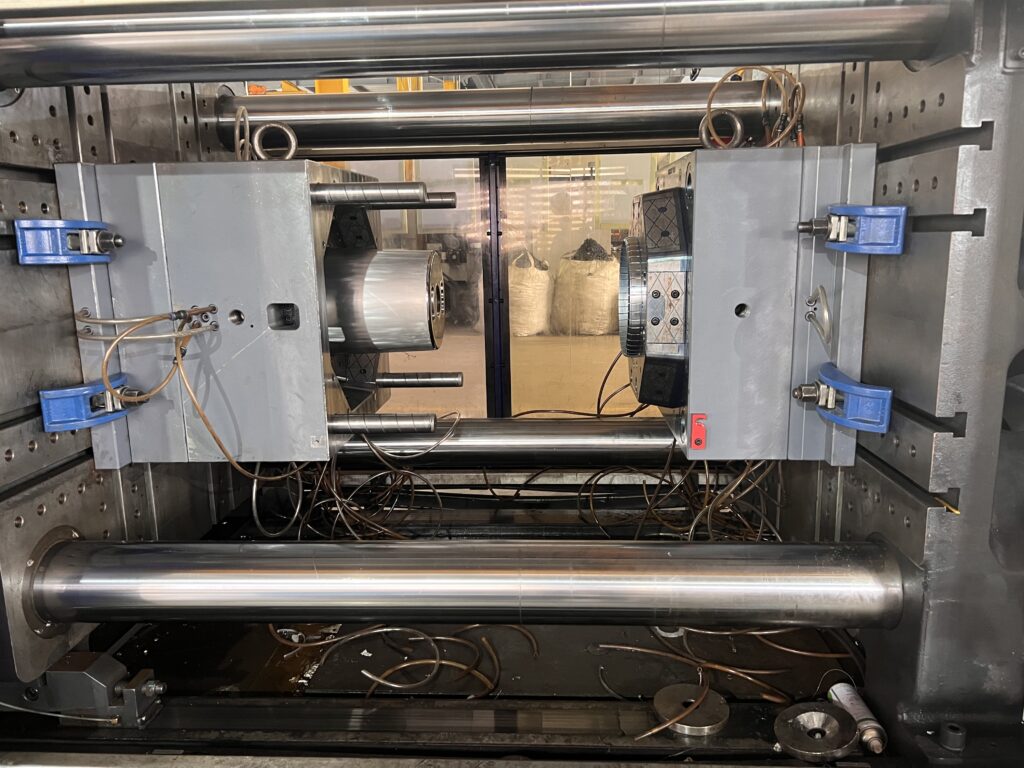
The paint bucket body mold is responsible for creating the main container part of the paint bucket. This mold must be carefully designed to produce a sturdy and durable product, capable of holding paint without leakage. Manufacturers utilize advanced CAD software to design the mold, taking into consideration factors such as wall thickness, draft angles, and internal reinforcement ribs.
Paint Bucket Lid & Closure Mould
A tight-fitting lid is essential in maintaining the quality of the paint stored in the bucket. The paint bucket lid and closure mold creates the top portion of the paint bucket, ensuring an airtight seal. It typically features a locking mechanism or snap-fit design for secure attachment and easy removal.
Paint Bucket Handle Mold
The handle mold is used to create ergonomic and strong handles for paint buckets, allowing comfortable and secure transportation. This mold should create a smooth finish to avoid any discomfort while carrying the paint bucket.
Paint Bucket Mold Runner System
The runner system in paint bucket molds is responsible for guiding the molten plastic material into the mold cavities. This system can be cold or hot, depending on the material and the specific production requirements. Efficient design of the runner system ensures uniform material flow, minimizing defects and improving the overall quality of the paint bucket.
Paint Bucket Mold Cooling System
Proper cooling is essential in paint bucket mold manufacturing, as it affects the cycle time and overall efficiency of the production process. Cooling channels are integrated into the mold to ensure optimal temperature control, reducing warping and other defects caused by uneven cooling.
Paint Bucket Mold Material
Choosing the right material for the paint bucket mold is vital in ensuring a long-lasting and high-quality product. Common materials used in the manufacturing process include pre-hardened steel, stainless steel, and aluminum. The material chosen will depend on factors such as the desired production volume and the specific properties of the paint bucket.
Paint Bucket Molds Size
Paint bucket molds are available in various sizes to cater to different market needs. Manufacturers can design molds small enough for 1-gallon plastic buckets or large enough for 5-gallon plastic buckets. Sizes of paint bucket molds can also be customized to fit specific customer requirements.
Auxiliary Machines for Paint Bucket Injection Molding
Several auxiliary machines play a critical role in the manufacturing process of paint buckets using injection molding machines. Each machine has a unique function that contributes to the overall efficiency and quality of paint bucket production. In this section, we will explore the main auxiliary machines used for paint bucket injection molding.
Hopper Dryer
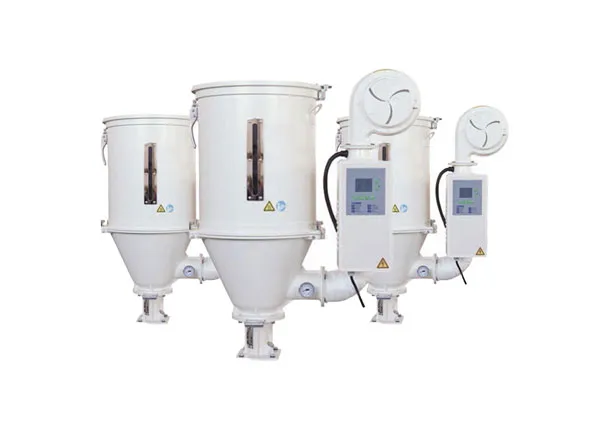
hopper dryersA hopper dryer is essential in the paint bucket molding process, as it dries the plastic granules before they are fed into the injection molding machine. By removing excess moisture, the hopper dryer prevents defects and ensures the end product’s durability and appearance.
Autoloader
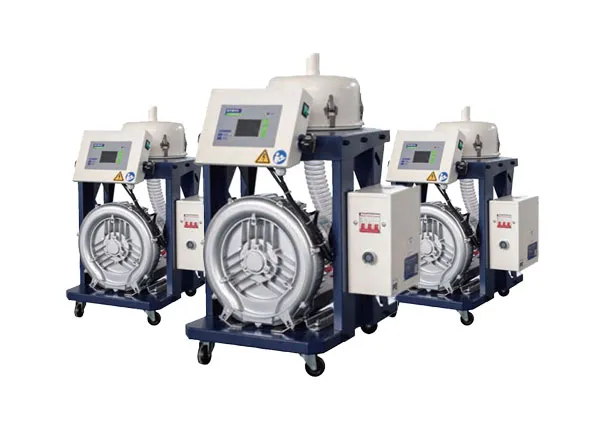
Vacuum-loadersThe autoloader automates material transport from the hopper dryer to the injection molding machine. It is crucial for maintaining a continuous flow of material, increasing production efficiency and reducing the risk of contamination.
Air Compressor
Air compressors provide the compressed air necessary for various processes in paint bucket molding, such as pneumatic valve control and part ejection. It is vital to the overall efficiency and productivity of the molding process.
Color Mixer
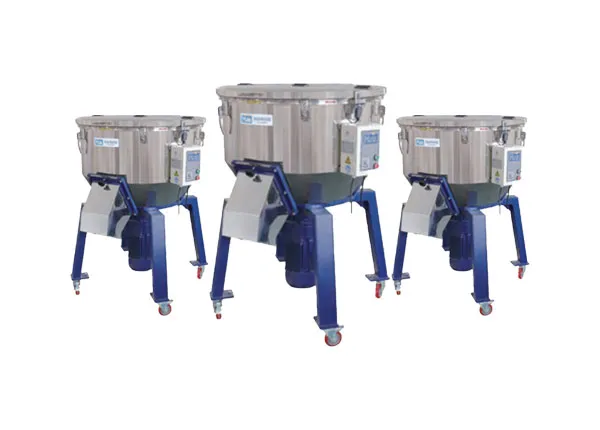
blendersA color mixer ensures a uniform distribution of pigments and additives throughout the plastic material, resulting in consistent coloration in the final paint bucket. Using a color mixer helps achieve a more professional and aesthetically pleasing product.
Crusher
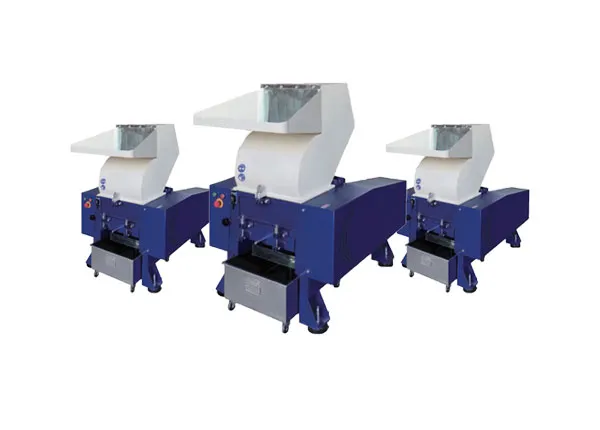
crushersA crusher is an essential piece of equipment for recycling plastic waste generated during paint bucket production. It grinds the waste material into small granules, which can be reused in the manufacturing process, reducing material waste and overall production costs.
Chiller
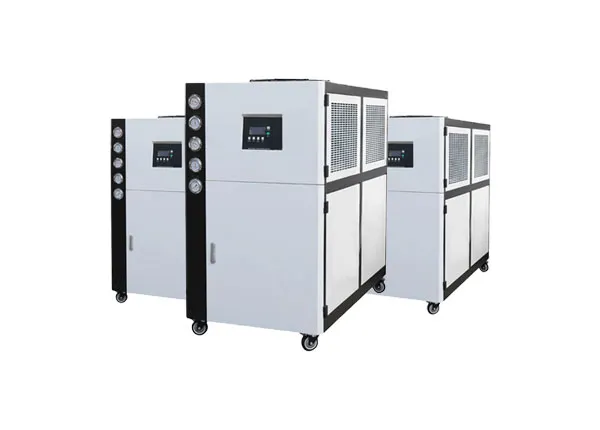
chillersA chiller keeps the temperature under control during the injection molding process. It cools the mold and hydraulic oil, maintaining suitable temperatures for optimum production conditions and preventing any potential damage to the machine or mold.
Cooling Tower
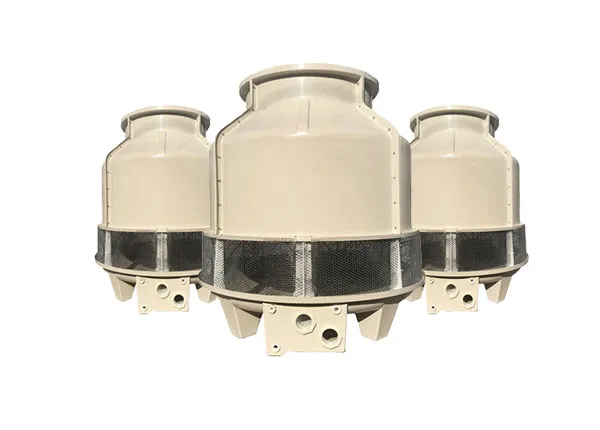
cooling-towersThe cooling tower works in conjunction with the chiller, providing a cost-effective solution for cooling large volumes of water. It dissipates heat generated during the paint bucket molding process, ensuring the stability and efficiency of the chiller and other auxiliary machines.
Inner Mold Label Robot
In the paint bucket manufacturing process, an important component is the inner mold label (IML) robot. This robot plays a crucial role in ensuring that the paint bucket labels are efficiently applied and have a professional appearance. The use of an IML robot system brings a number of benefits to paint bucket production, such as speed, accuracy, and reduction of manual labor.
The IML robot places labels directly inside the mold of the injection molding machine, which is used to produce paint buckets. These labels, which adhere to the inner surface of the plastic container, are applied during the simultaneous molding and labeling processes. This method differs from other labeling techniques, as it eliminates the need for a post-production labeling process, resulting in a more efficient and cost-effective production method for paint bucket manufacturers.
There are various factors to consider when selecting the right IML robot for paint bucket production. Some key considerations include:
- Compatibility with the injection molding machine being used
- Precision and accuracy in label placement
- High-speed functionality for increased production
- Ease of integration within the manufacturing process
In addition to these factors, it is also important to choose an IML robot supplier with a strong reputation for quality, reliability, and support. This ensures that the IML robot system operates optimally within the paint bucket production line, streamlining the manufacturing process and ensuring a high-quality end product. In Mold Label(IML) and 20 Liter Plastic Paint Bucket Production Line are sources that discuss this technology in further detail.
Heat Transfer Print Machine
Heat transfer printing machines play a crucial role in the process of producing high-quality, visually appealing paint buckets. These machines enable the application of labels and designs onto plastic paint buckets using a heat transfer process.
Heat transfer printing machines typically consist of several key components, such as a PLC control system, touch display, pneumatic control for the heat plate, and stepper motor for left/right movement. These machines are designed to be user-friendly and easy to operate, offering adjustable settings for stamping pressure, temperature, speed, and oval angles.
Some of the benefits of using a heat transfer print machine for paint bucket production include:
- High-quality, durable labels and decorations that can withstand wear and tear.
- Ability to print complex and intricate designs, including logos and patterns, onto paint buckets.
- Reduced production time and increased efficiency compared to other printing methods, especially for larger volumes of paint buckets.
- Cost-effective solution for paint bucket manufacturers looking to offer distinctive, aesthetically pleasing products.
These machines can accommodate various paint bucket sizes, materials, and design specifications, offering manufacturers a versatile and dynamic approach to creating top-quality, branded paint buckets.
Conclusion
In conclusion, the integration of advanced paint bucket making machines and technology has positively impacted the manufacturing process, resulting in improvements in productivity, quality, and cost-effectiveness. As the market demands more sophisticated and efficient products, it is crucial for manufacturers to stay up-to-date with the latest advancements, ensuring their long-term success in the industry.

